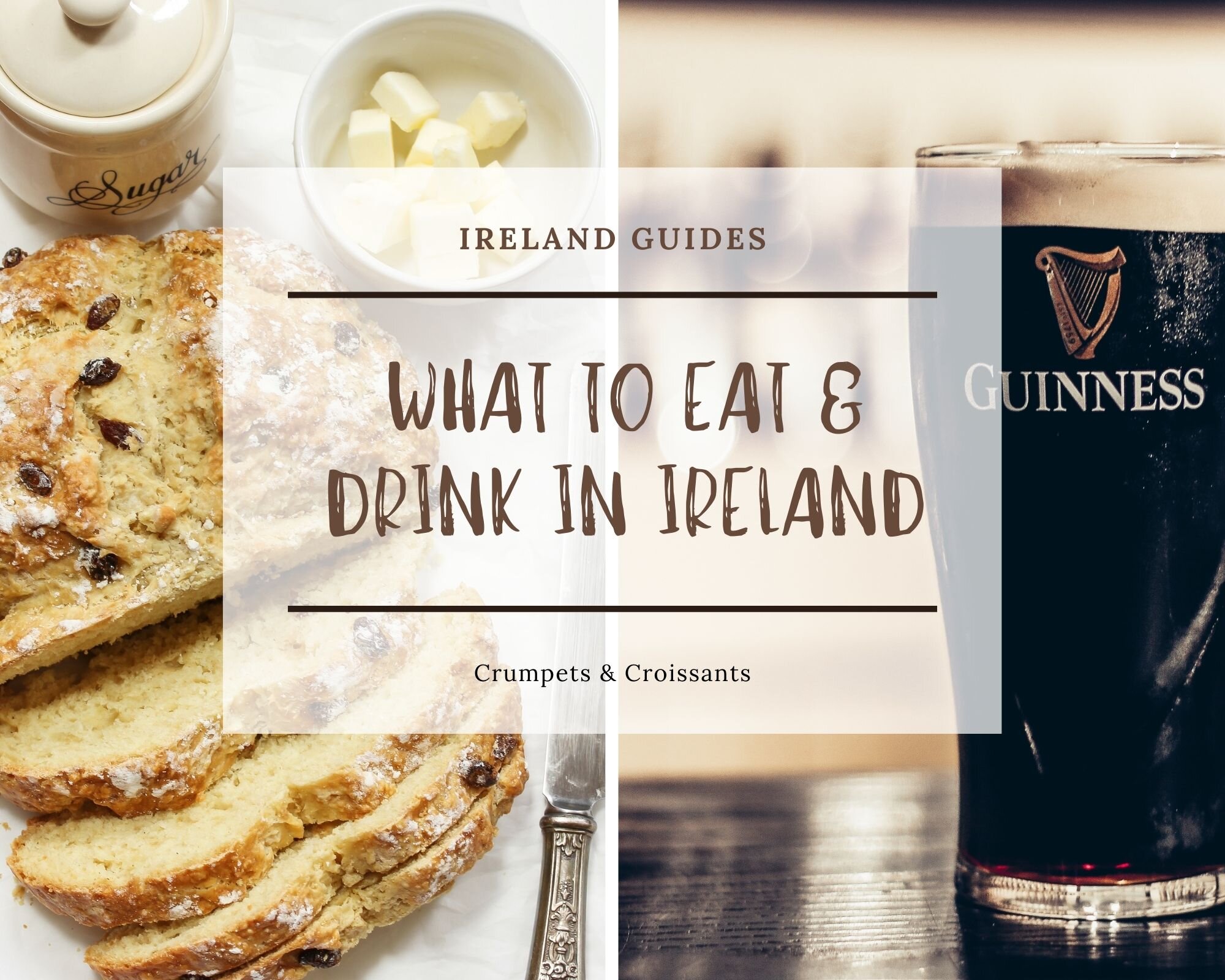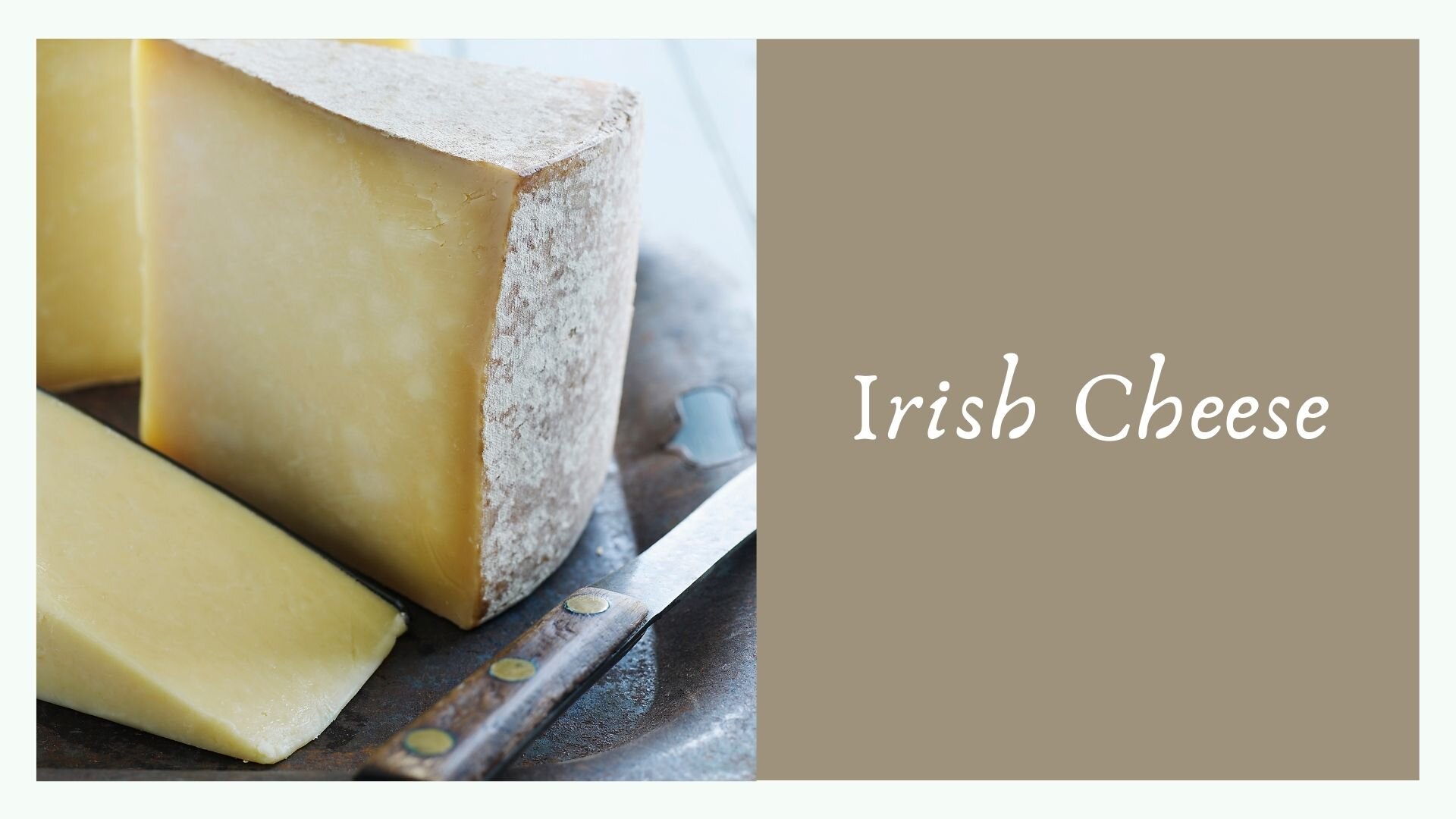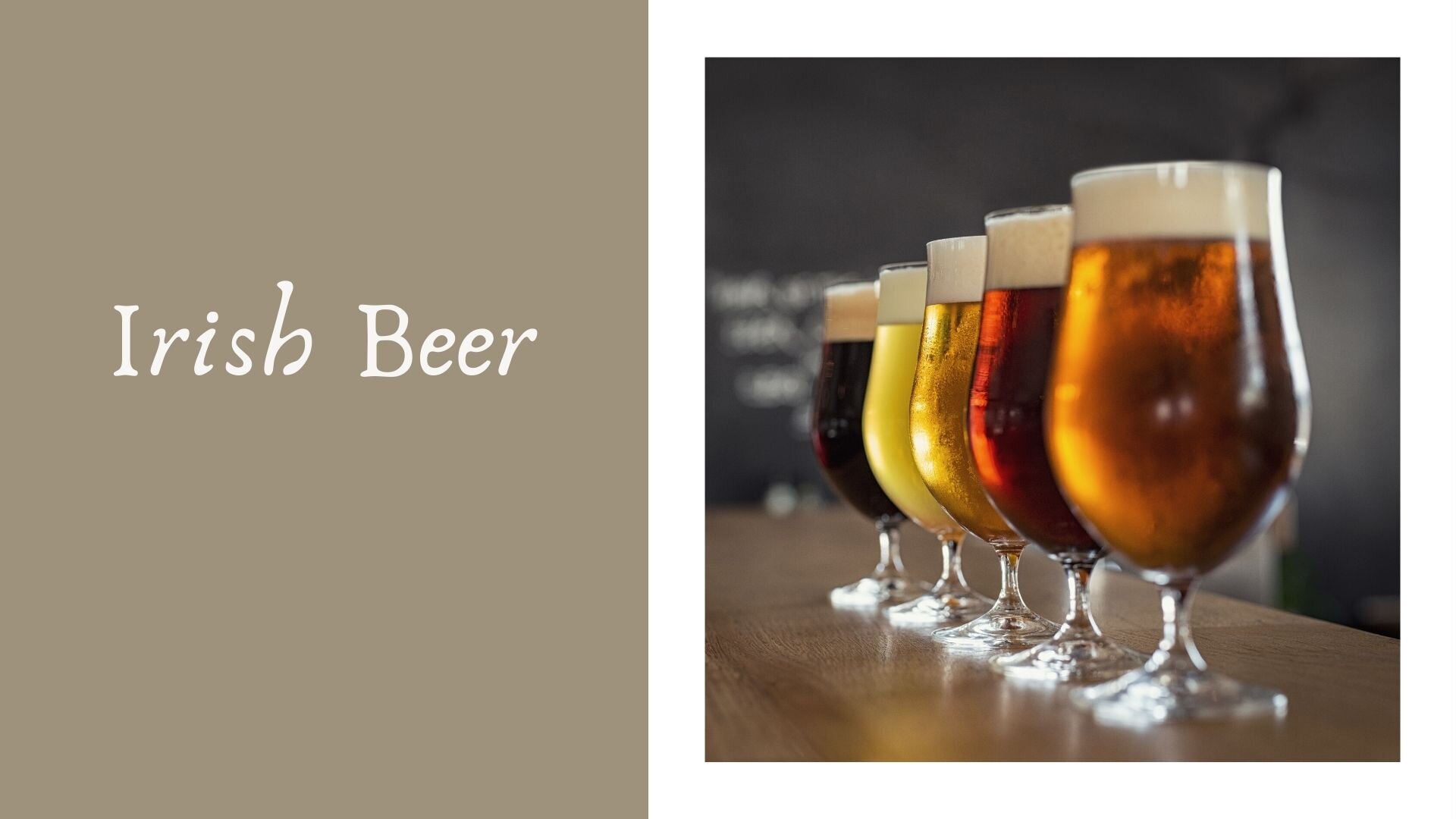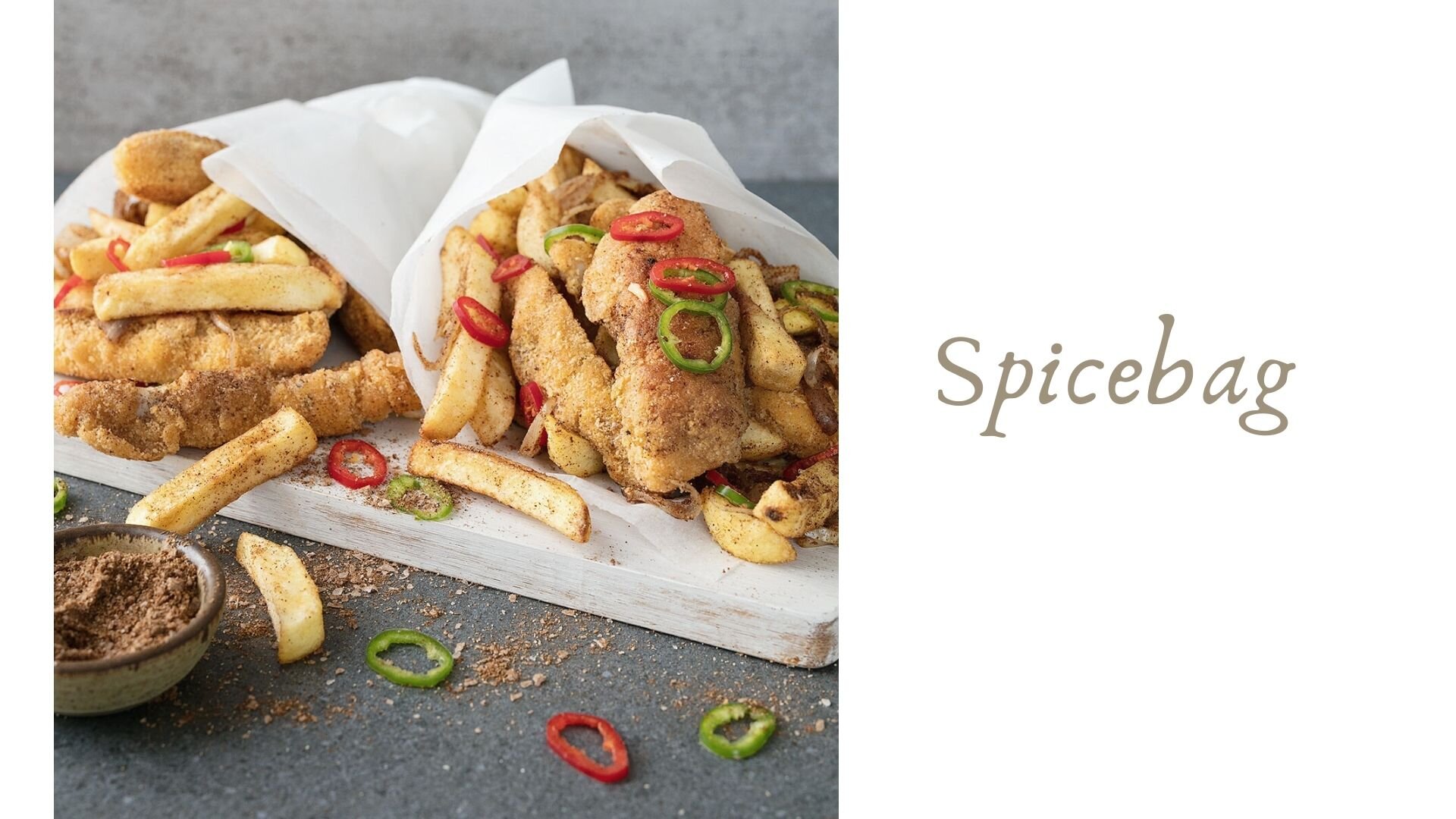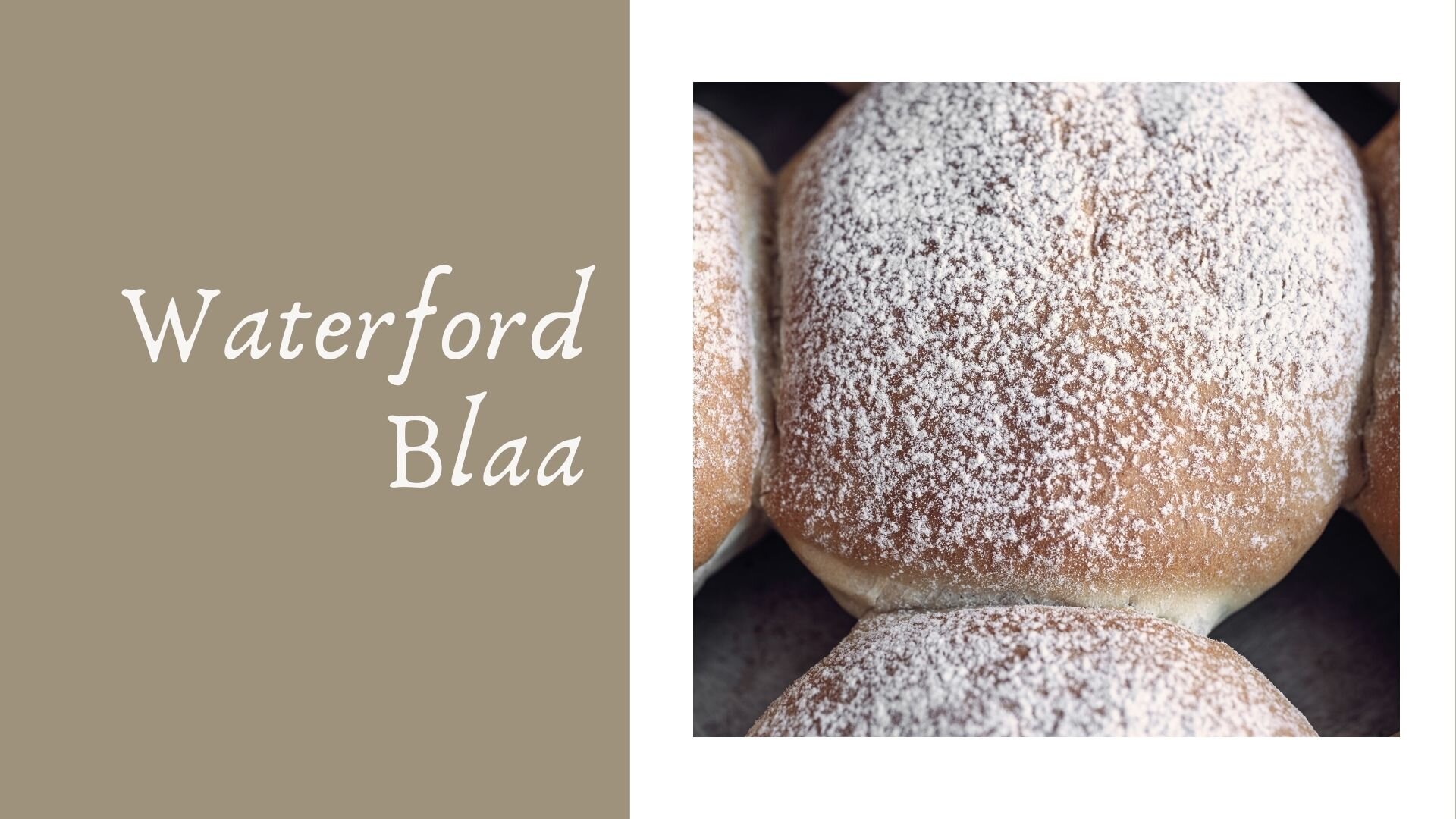Food (and Drinks) to Try in Ireland
If you were unaware that Ireland has a cuisine of its own - besides potatoes and Guinness, that is - no one can fault you. In truth, there is a reason it lacks the same renown as other European cultures, and with enough similarity to British cuisine, it’s easy for Irish food to be overlooked or dismissed. The truth is that, for the most part, Irish cuisine can often be rather plain, dry, or overly saucy (usually drowning in curry sauce). That’s not to say that there aren’t some delightful specialities in Irish cuisine that are worth trying. In fact, while Irish fare may not be considered a gastronomic feat, there are some dishes that somehow manage to hit the spot better than anything you’ll find in the kitchens of France, Italy, or the like, especially if you are nursing a hangover.
And of course, given Ireland’s growing diversity - especially in Dublin - you’ll find some great restaurants throughout the whole country, delivering amazing food from a variety of cultures, often mixing other cuisines with Irish staples. So don’t be discouraged, you won’t go hungry or be disappointed with the food while visiting the Emerald Isle.
Below is a list of some Irish foods and drinks you should definitely try while visiting Ireland (or some that you should bring home with you as a souvenir to enjoy post-trip, i.e Butler’s chocolates and whiskey).
A quick bread that seems to be a crossover between a scone and a round crumbly loaf, a true Irish soda bread only requires only four ingredients despite the various flavours or alternatives you’ll find on the market - flour, buttermilk, baking soda and salt. Anything else, from extra ingredients or alternate flours, is simply fluff - welcome fluff, but fluff none the less. Of course, some people prefer the new versions of this 19th century bread, which can often include caraway seeds, dried fruit, orange zest, or even an egg.
Despite coming across somewhat like a scone, its a heartier bread, perfect for lathering in butter, dipping in soup, or scraping the remnants of your stew.
If you order just an Irish stew, there’s a chance you’ll get a mutton stew, a remnant of the old days - a hearty staple common to local pubs. But luckily over the years the traditional Irish stew has more commonly swapped mutton for beef, with Guinness added for extra flavour and tenderness. What makes this beef stew standout is the quality of the beef - Ireland is renowned for their high quality beef, and as Guinness is far superior in its native land, ordering an Irish Beef and Guinness Stew is requisite when visiting.
When in Ireland, do as the Irish do and enjoy some potatoes. Yes, their cuisine includes more than just the humble potato, but that doesn’t mean it’s not a staple of many Irish meals. Colcannon is a mashed potato dish with cabbage or kale, traditionally using left ofter potatoes. Of course, in a restaurant you can expect freshly whipped mashed potatoes, but this hearty come cooked vegetable dish was a way to use up left overs. It will sometimes be made with chives, leeks, and/or onions, with some also throwing in bacon bits to fancy it up. When ordering at a restaurant, don’t be surprised if there is a chunk of butter in the middle - it will only make this dish creamier.
While a popular year-round staple, it’s also considered a special dish to eat on Halloween with some folklore and superstition attached to it.
A protected food by the European Commission (Protected Geographical Indication status), a Blaa is a doughy white bread roll, most commonly found in Waterford or Kilkenny. While there may appear to lots of buns that look like a Blaa - white bun, square with rounded edges, crusty on the outside, dusted with white flour before baking - due to its protected status, only certain bakeries can produce it. And over the years, the number of bakeries licensed to make this roll has shrunk to only four, with two of them located in Waterford. That said, while you can only grab a Blaa fresh and hot from one of these four shops, they do export their products around the country so you’ll be able to find an authentic Waterford Blaa in Dublin or Cork.
Not to be confused with the bap, another popular Irish roll, the Blaa is said to have started with the French Huguenots who migrated to Ireland in the 17th century.
A quick bread with raisins and/or dried currants, it’s viewed as more of a dessert than a savoury bread - often referred to as tea brack. Originally this was a Halloween treat, though its popularity has lead to more frequent production of the sweet loaf. Traditionally, the barmbrack is stuffed with different tokens, each symbolic of a different future. As each person gets a slice of the barmbrack, the token found in their slice is said to determine the year ahead of them - the tokens evoking feelings of a Monopoly board, with the common ones being a ring, a coin, a thimble, matchstick, a piece of cloth, and a pea.
If you get the coin, your year will include fortune and wealth, while the ring suggests a wedding is on the horizon. If you get the pea, you best forgo any hopes of getting engaged, while a matchstick suggests marriage struggles or disputes. All better than the thimble, which promises a year of singledom and spinsterhood. The cloth is equally depressing, suggesting a year of poverty or financial struggles and bad luck. While other tokens can be included, and have been historically, the aforementioned tokens remain the most common for this halloween tradition.
Of course, should you buy or make a barmbrack any other time of the year, it’s token free and lacking any supposed psychic powers. It’s just a dessert bread, perfect for smothering in Irish butter as you sip on your tea.
Though Scottish in origin, scones have become a proper teatime snack throughout the British Isles, popular for breakfast, afternoon tea, lunch, and dessert. Throughout the country you’ll find teashops, bakeries, and cafés with a selection of scones for you to enjoy, often plain or a fruit variety, accompanied by butter and/or jam and cream. Sometimes referred to as a quick bread, a scone tends to be sweeter rather than savoury (though you can always find a few modern bakeries who have created some fun alternatives in flavour).
A full Irish breakfast might be one of the best hangover cures ever created, perfect for soaking up any remaining alcohol. It’s also great for anyone who likes a big hearty breakfast, similar to a Full English breakfast. While it can technically change from restaurant to restaurant, along with variations depending on what region of the country you’re in, but staples of a Full Irish include: fried eggs (maybe scrambled if you ask), toast, a fried tomato, bacon rashers, sausage(s), black and/or white pudding. Usually it will included baked beans and mushrooms as well. with Irish Soda Bread as the included toast/bread.
A bacon rasher is still prepared like American bacon but uses a different cut of the animal, making it less fatty; a leaner slice - somewhere in between American-style bacon and Canadian bacon. If you don’t already know what black pudding is (also known as blood pudding), I suggest you don’t look into the details and just accept that it’s an Irish and British “delicacy”. White pudding, is the bloodless version of black pudding, often made with oatmeal inside the sausage. Again, perhaps one of those don’t ask, don’t tell situations if you don’t like knowing the bloody details.
Admittedly, this dish is equally English as it is Irish, with both Ireland and England laying claims to its heritage. In all likelihood, there was a version of fish and chips in both countries. But still, it has become synonymous with Irish cuisine, with fish shops in Ireland dating back to the 19th century. The oldest in Dublin - Leo Burdocks - dates back to 1913 and is still open today.
Traditionally you’ll find it made with cod in Ireland, though some restaurants or fish shops might use or offer haddock instead. While by no means healthy and incredibly hearty, it doesn’t feel as heavy as you might expect - probably because the fish is caught fresh off the coast.
There is nothing particularly unique about the ingredients or makeup of an Irish chicken fillet roll, and yet somehow, you’ll never find one quite as good or greasy as the ones in Ireland. For those who aren’t down for a Full Irish, this is a popular hangover cure, just as much as it’s a popular drunk food and all day staple - one of the most popular deli items in Dublin, if not the whole country. And while lots of delis and restaurants offer this morning favourite, if you want an authentic Irish experience, get your chicken fillet roll at Centra (a chain deli/convenience store - the classier 7-Eleven).
Typically you’ll find this sandwich served on a small baguette bread, though some places may use an Irish bap bread (a crusty white bread roll). You’ll have your choice of butter or mayo spread across the bread, butter often being the more popular choice - though some opt for both - and you can choose from regular breaded chicken or spicy breaded chicken. The other ingredients traditionally include, though you have some flexibility, lettuce, tomato, and/or onion, cheese - really whatever the deli has available that interests you.
Try it at Centra, Spar, or Londis for a cheap morning-after cure, or find a fancier version at Irish restaurants for brunch.
Being an island based country surrounded by the Atlantic ocean, you can rest assured that you’ll find amazingly fresh seafood throughout the country. Scallops, fresh fish, mussels, prawns (shrimp), you cannot go wrong with whatever you choose, though it’d be remiss to skip out on trying the oysters - delicious, fresh, and great diversity simply based on where in the country they were caught. There are restaurants dedicated to oysters, with most seafood restaurants having a menu specific for their various oysters.
In fact, there is even a festival dedicated to oysters - The Galway International Oyster Festival, typically held in late September. It’s the oldest festival of its kind in Europe, and draws in visitors from around the world for a weekend of oyster-tasting, contests, cooking demos, workshops, and parties.
As noted above, Irish seafood is rather famous, and that includes Irish smoked salmon/gravlax. While you may not buy it fresh from a shop unless staying in an Air B&B with a kitchen, you’ll find smoked salmon on the menu at nearly every restaurant, especially for breakfast/brunch. Scrambled eggs with a side (more like half the plate) of smoked salmon, toast with smoked salmon, eggs Benedict with smoked salmon… rest assured, come morning, you’ll be able to sample some Irish smoked salmon almost everywhere.
While this makes for a great souvenir to bring home, if you get a chance to try some while in Ireland, be sure to! Ballymaloe Original Relish is a tomato-based relish, with a similar purpose and taste to that of ketchup or a tomato chutney. But where it differs from your average ketchup is both in texture and potency. Ballymaloe is a chunkier sauce than ketchup, with more of a kick to its flavour. It’s great for dipping your fries in, and goes a long way with a burger, chicken fingers, or nearly anything else you’d use ketchup for. However, unlike ketchup, Ballymaloe Original Relish works great with a cheeseboard, mixed into a salad dressing, or as part of a marinade. Try it with avocado toast, an omelette or savoury crepe, inside a frittata or chilli mix.
It’s got a lot of versatility, and makes for the perfect addition to nearly any meal.
Yes, this is exactly what it sounds like - butter, not a witty name for something else. It’s just a brand of Irish butter. But what makes this worthy of trying is that Irish butter is notorious for its quality and taste, considered superior to most others around the world. This comes from the higher fat content used and the grass used to feed the cows. You’ll almost immediately notice a difference as Irish butter is a much brighter - and natural - yellow than most other butters, especially in North America; this is a result of the aforementioned grass, which is high in beta-carotene.
Aside from the fresher and creamier taste and brighter colour, Irish butter tends to be more spreadable and a smidge more nutritious. So when you get a slice of bread or scone with butter, don’t be shy and lavish that butter all over.
It seems that must countries and cultures have their own version of the potato pancake, Ireland included. In Switzerland, their traditional potato pancake dish is called a rösti, often served with meats and cheeses. In Germany, it’s called kartoffelpuffer, and like neighbouring Poland, where the potato pancake (called placki ziemniaczane) is a national staple, it is traditionally served with apple sauce or sour cream. It is similarly served and prepared in Luxembourg, where it is called gromperekichelcher. In the Ashkenazi Jewish culture, the potato pancake is called a latke, and is a holiday favourite.
In Ireland, the potato pancake pancake is called a boxty, and its preparation differs from the more Central European countries, though produces a similar result. A boxty is traditionally made with grated potatoes and a whipped mashed potato, with flour, a pinch of salt, and fresh milk/buttercream thrown into the batter before being fried in a pan.
Every country has their own brand of potato chips/crisps that seems to be a national favourite, and in Ireland that brand is Tayto. While Americans and Canadians grew up with Lays, Ruffles, and Pringles (albeit with different flavour preferences), and the British have Walkers and Monster Munch, in Ireland Tayto is the go-to brand for potato chips/crisps. The bags are smaller than the North American standard, and the diversity in flavours in more limited, but still they make for an amazing snack and souvenir. After all, Ireland is the country of potatoes.
Fun fact: there are two different Tayto chips - one that is family owned in Northern Ireland and the other, which is the original, in the Republic of Ireland, now owned by Intersnack. Both produce the famous Cheese & Onion flavour that Tayto is known for, and both have a spud-man as the symbol of their brand. However, Tayto (from the Republic) comes in a red, white and blue bag, with Mr. Tayto a little more polished than his British counterpart from Northern Ireland (which uses a yellow bag).
While both Tayto’s are quite similar, and while it may be hard to taste the difference (despite Irish and Northern Irish celebrities claiming a preference for one or the other), there is only one Irish Tayto. So be sure to grab a red, white and blue bag of these crisps while you’re in the Republic of Ireland.
A famous brand of black pudding, white pudding, and sausages in Ireland, regarded for their flavour and high quality. Clonakilty blackpudding, also known as blood pudding, combines beef, beef blood, oatmeal, onions, and an assortment of spices. The texture is crumbly and the flavour rich, perfect for those who embrace their inner carnivore.
The Irish spice bag is another odd sounding creation that has been adopted as a staple of Irish cuisine. A fast food staple, the Spice Bag takes inspiration from Asian cultures, made up of crispy fried chicken, fries, red and green peppers, chilli peppers, and fried onions, tossed together in seasoning and spices and served in a takeaway bag. Though if you happen to be visiting a nicer chip ship or Chinese takeaway, you’ll likely get it in a box.
Not that there aren’t lots of brands of tea to choose from, but Barry’s is one of the most iconic Irish brands - a household staple. Whether you’re buying some for your hotel/Air B&B or buying a couple boxes for home and souvenirs, you won’t be disappointed with a box of Barry’s tea, especially their Gold Blend or Irish Breakfast (pronounced Bahr-rees). So enjoy a nice cup of Barry’s, you won’t regret buying a box of this tea.
It may surprise you but Ireland is actually home to some many amazing cheeses, especially their famous and widely exported Dubliner cheese, which is similar to a cheddar. Of course, you can also find a nice Irish cheddar as well, but the Dubliner should not be overlooked. Despite often being overlooked, part of what makes Irish cheese worthwhile and so flavourful is the quality of the ingredients. Farming is a serious industry in Ireland, with a lot of care paid to their pastures. Dairy products in Ireland, like butter and milk, are notorious for their superior quality. Because of this, Ireland produces fine cheeses to rival that of most countries. So if looking to picnic in a park, stock up the fridge, or making snacks for a hike while in Ireland, perhaps consider trying one of these delicious and famous options:
Cashel Blue - a blue cheese, produced in Tipperary since the 1980s. Depending on the age of the cheese, you’ll find a different in texture and aroma, going from milkier to more buttery. While this cheese goes nicely in a sandwich, it’s also great on a cheese board or with port.
Gubbeen - a creamy texture makes this semi-hard cheese perfect for spreading on bread, and wonderful for dipping after its heated up. What makes it unique is the woodland and nutty flavours it evokes on the palatte, from forest mushrooms to hazelnut.
St. Killian - an Irish answer to the French camembert, this creamy cheese originating in Wexford is rich in flavour. You’ll recognize it by its unusual hexagonal shape, but you’ll remember it for its flavour.
Templegall - a rare cheese to find, even in Ireland, but definitely worth sampling. It’s the Irish version of a gruyere cheese, equally tasty and great for baking/cooking with. You’ll have to visit a specialty cheese shop to get your hands on this one, but you won’t be sorry once you do.
Carig Bru - produced in County Cork, Carig Bru cheese is a buttery semi-hard cheese that goes with everything. The rind is repeatedly bathed in an Irish ale, which gives the cheese a slight hoppy taste.
St. Tola Crottin - a goat cheese produced in the Burren, County Clare, this cheese is made with fresh curd and sea salt. It’s a unique goat cheese, but remarkably light, with a hint of lemon in the flavouring.
Duurus - everyone needs a pungent cheese and this one is Ireland’s. Potent in smell and flavour, this semi-soft cheese from Cork has a unique earthy flavour.
Other great options include: Milleens (soft cheese), Gortnamona goat cheese, Killeen Fenugreek cheese (gouda-like goat cheese), Crozier Blue (blue cheese), and Cahill’s Irish Cheddar (which regardless of the specific type from this brand, it is as easily found as the Dubliner).
A ‘99’ cone, or a ‘Teddy’s 99’ is a soft serve vanilla (or swirl) ice cream cone with a chocolate Cadbury Flake bar sticking out. It’s a summertime staple in Ireland, perfect for days by the coast or as you stroll through the city.
Made in Dingle, where their first ice cream parlous was located, Murphy’s Ice Cream is now available throughout the country - whether in a 1/2 pint at the grocery store or with a fresh cup from one of their shops. While the quality is very good (again, Irish dairy is renowned for its quality), what makes Murphy’s an institution and must-try is their unique flavours of ice cream.
The most famous flavour perhaps, and the most odd, is their ‘Irish Brown Bread’ ice cream, where real brown bread is baked with sugar and used. It’s an odd flavour but surprisingly delicious, especially if you get it with a scoop of their ‘Honeycomb Caramel’ or ‘Butterscotch’. Their other bestseller is ‘Dingle Sea Salt’, where real salt from the Dingle coast is boiled down for production and used. Again, it’s odd but surprisingly tasty.
Other unique and delightful flavours include: ‘Lemon Curd’, ‘Kieran’s Cookies’ and ‘Dingle Gin’, which does in fact use real Dingle Gin, making it a boozy ice cream. It’s definitely a fun and safe way to taste the 2019 World’s Best Gin winner.
While gin has been produced in Ireland since the late 18th century, it’s gone through a renaissance of sorts in recent years, with more and more Irish distilleries popping up to produce craft bottles of gin. Originally it was whiskey distillers producing gin while waiting for the whiskey’s maturation process to finish; producing and selling gin was a way to boost revenue while the star attraction sat in barrels, as gin doesn’t need to age and can be bottled immediately. But in the last decade, gin has become a more popular drink at the bars, especially with the rise of gin and tonics - so popular that gin is now the fastest growing spirit in Ireland, something that has prompted new unique distillers to open with fresh adventurous approaches. There are over 50 gin brands in Ireland, with 12 new ones emerging in 2018 alone, as well as 22 different gin distilleries throughout the island. Gin is growing to become one of Ireland’s biggest exports, with Irish gin highly respected around the world for its superior quality yet approachable price point.
Wherever you are in Ireland, you’ll be able to sample at least one brand of Irish gin, with some bars and restaurants having whole menus dedicated to the G&T, filtering the gin, the tonic, and the garnishment based on complimentary notes and flavours. The most recognized brand is Drumshambo Gunpowder gin, which uses asian botanical and gunpowder tea for flavouring. Other standout Irish gins to try (whether in your cocktail or as a bottle you bring home with you) include: Dingle Original Gin, Glendalough Wild Botanical Gin, Listoke 1777 Small Batch Irish Gin, Conncullin Irish Gin, Method and Madness Irish Micro Distilled Gin, Mór Handcrafted Irish Gin, Bertha’s Revenge Irish Milk Gin, and Ha’Penny Dublin Dry Gin.
You can also find Irish pink gin if you’re looking for something really special to bring home with you. In fact, Irish talkshow host Graham Norton has his own small batch of pink gin.
Irish whiskey has long been respected, especially with the preservation of famous brands like Jameson and Bushmills. And while there are tons of classics to try while in Ireland, especially when you can visit the distilleries, there are also a lot of new brands emerging, with a resurgence of Irish whiskey distillation. Like gin, Irish whiskey is experience a renaissance, with micro-distilleries opening throughout the country. And while gin might be the fastest growing spirit in Ireland, Irish whiskey is the fastest growing spirit globally as of 2020 - a remarkable feat considering that just two decades ago there was only three working distilleries in Ireland and now there are dozens.
While visiting the distilleries are always something special to do, you can enjoy a nice glass or flight at various bars and restaurants around the country. Sample famous classics like Jameson, Bushmills, Tullamore Dew, and Redbreast, or opt for newer standout brands like Teeling, Method and Madness, Glendalough, and Roe & Co. A list of whiskey brands to keep an eye out for includes:
Bushmills
Tullamore Dew
Redbreast
Blue Spot
Method & Madness
Writer’s Tear
Kilbeggan
Powers
Jameson
Teeling
Roe & Co.
Yellow Spot
Glendalough
Dublin Liberties
Pearse Lyons
Tyrconnell
While in Ireland, you ought to try the most famous beer of the country, especially because it’ll never taste as good again. For some inexplicable reason, Guinness tastes like “shite” anywhere else in the world, only really palatable in its native country. So while in Ireland, get yourself a proper pint at the pub, where attention is paid to how its poured, ensuring the right amount of head (that’s the foam, for those who don’t know).
As noted above, when in Ireland, you ought to try a Guinness as its the most famous Irish beer, one with a deep rooted history in the country. But after you’ve had your obligatory pint (most likely at the Guinness Storehouse if you’re in Dublin), do yourself a favour - especially if you like beer - and try one of the other Irish lagers/ales/stouts on tap. In fact, Guinness ltd. even owns some of the best beers in the country - all vastly different than its namesake drink.
Some popular choices include: Smithwick’s Irish Red ale, Dublin’s Porterhouse Irish Red, Hop House 13 (Guinness produced lager), Rockshore, Porterhouse IPA, Kilkenny Irish Cream Ale, and Murphy’s Irish stout. If you’re more interested in microbrews and craft beers, consider keeping an eye out for Rascals Brewing Company, Porterhouse’s more niche and specialty brews, The White Hag Brewing Company, and Lough Gill Brewery. And if you prefer a cider, Bulmer’s (aka Magner’s) is a popular choices amongst locals and tourists alike, though you’ll find equally great quality and taste with Orchard Thieves or in smaller and more local brands like Macivor’s Traditional Dry Cider, Devil’s Bit Mountain Cider, and Armagh Carsons Crisp Cider.
The alcoholic shot for those who don’t actually enjoy shots. A Baby Guinness looks exactly like it’s namesake but the taste is oh-so different; it’s taste more similar to that of a coffee ice cream than anything resembling beer. Just be careful, it’s easy to throw these shots back and before you know it, you’ve spent a near fortune on them and drank far more than you’ve realized.
It’s predominantly Kahlúa, with a rim of Bailey’s that represents the foam of a Guinness pint.
